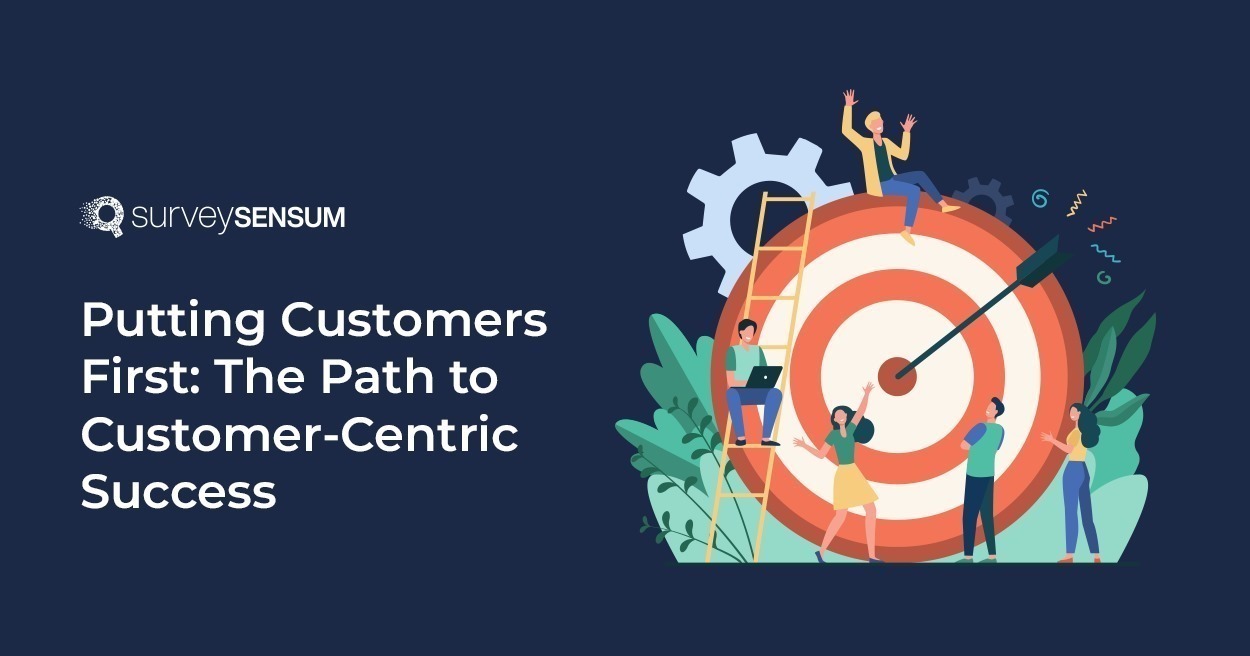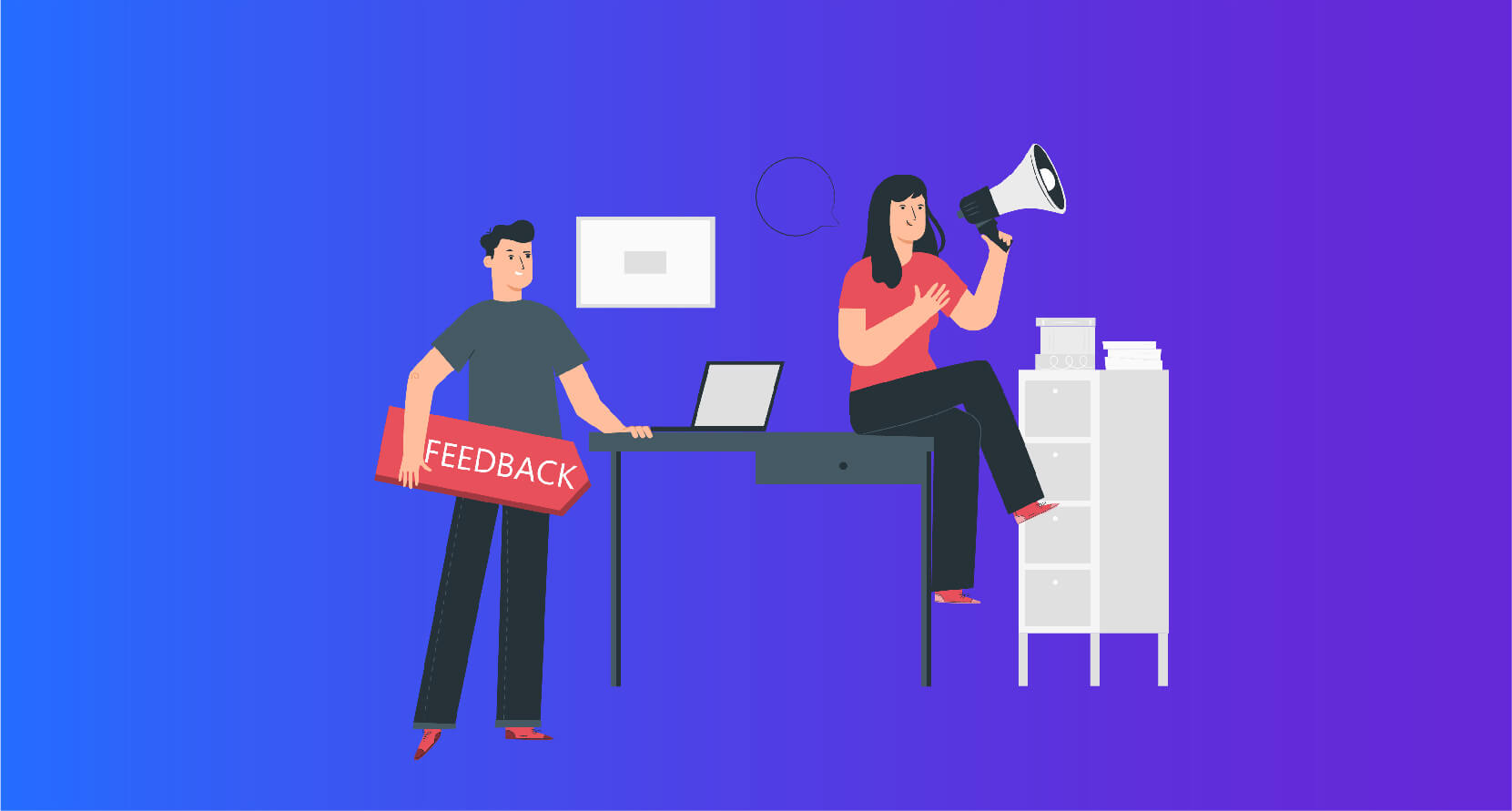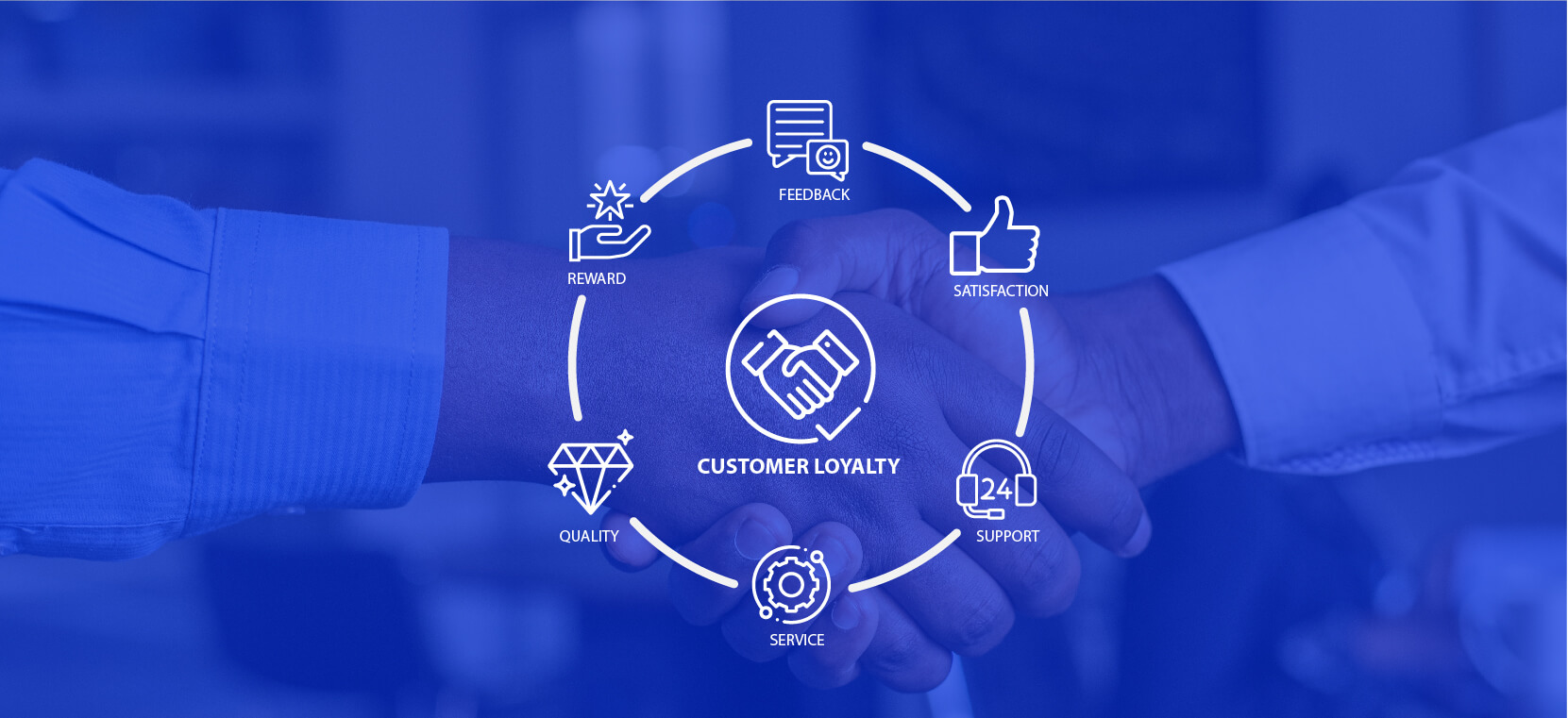
Ever heard about Zappos? Zappos is one of those companies that has gone above and beyond to deliver exceptional experiences to their customer.
From helping a customer order pizza in the middle of the night to delivering shoes overnight for a wedding, Zappos truly placed its customers at the heart of its corporate culture. Their obsession with customer satisfaction has placed them in the hall of fame of positive customer experience.
There is a term coined to refer to this obsession with customers and their needs, it is called customer-centricity. With this blog, we will delve deeper into the concept and explore how you can establish a customer-centric business by leveraging an efficient customer feedback platform.
3 Key Pillars of Customer-Centricity
- Customer Research and Understanding
- Tailored Product/Service Offerings
- Seamless Multi-Channel Experience
How to Build a Customer-Centric Culture For Your Business?
- STEP 1: Leadership Commitment and a Clear Vision
- STEP 2: Employee Engagement
- STEP 3: Customer Journey Mapping
- STEP 4: Customer Feedback Integration
- STEP 5: Data-Driven Decision-Making
- STEP 6: Employee Empowerment
- STEP 7: Close the Feedback Loop
What is Customer Centricity?
Imagine a company that cares deeply about making every customer happy. They don’t just sell products; they anticipate and fulfill customer needs before they’re even asked.
This isn’t just a slogan; it’s a business strategy called customer centricity. It means putting customers at the center of everything the company does. And it’s not a one-person job – it’s a shared responsibility that everyone in the company embraces.
There are too many things here. Simply define and move on.
But why is it so important for businesses to focus on this? Let’s find it out here.
Importance of a Customer-Centric Culture in Business
Here’s why a customer-centric culture is important and it impacts business success.
- Enhanced Customer Satisfaction: Did you know that businesses that prioritize customer needs and preferences tend to see a whopping 20% increase in customer satisfaction rates? When a company really understands its customers and tailors its offerings to match, it’s like a satisfaction booster that keeps customers coming back for more.
- Improved Customer Loyalty: Loyalty pays off big time. According to a Texas Tech University study, 83% of satisfied customers are willing to refer a product or service to others. This demonstrates the powerful impact of positive experiences on generating word-of-mouth advocacy.
- Increased Customer Lifetime Value: According to the Harvard Business Review, increasing customer retention by just 5% can lead to a profit boost of up to 95%. That’s the magic of customer-centricity. Happy and loyal customers don’t just buy once – they become repeat customers who keep the revenue flowing in.
- Innovation and Adaptability: Companies that keep their ears to the ground tend to innovate and adapt better. According to Qualtrics, nearly 80% of companies that outperform their competitors use customer feedback to identify emerging trends. By staying connected with customers, businesses can improve their products or services based on actual needs.
- Employee Engagement and Satisfaction: According to Forrester, when a business is truly customer-centric, employees are 2.5 times more likely to be engaged and motivated. When employees see the positive impact they’re making on customers’ lives, it’s like a morale boost that radiates throughout the whole organization.
Some businesses have special qualities that make them customer-centric.
What are these qualities?
3 Key Pillars of Customer-Centricity
Although there are countless other traits, here are three elements that are visible across the culture of most customer-centric businesses:
1. Customer Research and Understanding
In order to create a strategy or approach that places customers at the center of it, it is important to first understand your customer’s needs, expectations, and preferences.
But how to do that?
There are two ways you can understand your customers better
- By gathering feedback
- By creating customer personas
Collecting and analyzing customer feedback in real time is essential for understanding your customers. With channels like surveys, online reviews, and social media monitoring you can gain valuable insights.
But that isn’t enough; you also need to understand your customers. And how to do that?
– With customer journey mapping. Customer journey map helps you to step into your customers’ shoes and walk through their experiences.
Here’s how to craft a customer persona:
- Gather Data: Collect information about your customers’ demographics, preferences, behaviors, and pain points.
- Identify Patterns: Look for common traits and behaviors among your customers to group them into segments.
- Add Detail: Give each segment a fictional character that represents their characteristics and needs.
- Map the Customer Journey: Plot out the journey your customers take, from awareness to purchase and beyond.
- Highlight Touchpoints: Identify the key interactions customers have with your brand along the journey.
By doing this you can get a clear picture of your customers’ needs, desires, and journeys, enabling you to tailor your offerings and interactions to meet their expectations effectively.
2. Tailored Product/Service Offerings
Now we know what our customers want and expect, we have also created a buyer persona for them to better understand their experience. Now, it is time to tailor the experience according to their needs and expectations.
But how to do that? With personalization.
Imagine you’re shopping for shoes, and the website suggests pairs that match your style perfectly. It’s not luck; it’s a brand that understands you like a close friend. That’s the magic of personalized product and service offerings.
Take Nike’s ‘Nike By You’ initiative, for instance. They let you customize your sneakers down to the tiniest detail. With this initiative, Nike becomes more than a brand – it’s a collaborator in your unique style journey. That’s customer-centricity in action – making the customer a co-creator of their own product.

Personalization based on customer needs is a crucial aspect of customer-centricity. It involves tailoring your products or services to match the specific preferences and requirements of individual customers.
This can lead to higher customer satisfaction, increased loyalty, and ultimately, improved business results.
3. Seamless Multi-Channel Experience
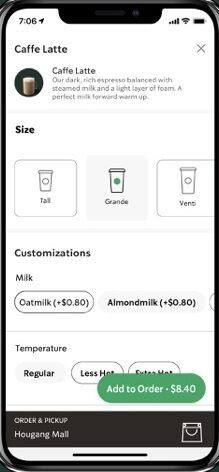
When it comes to a seamless shopping experience across multiple channels one brand that takes the lead is Starbucks.
Starbucks provides a seamless experience across its various touchpoints. Customers can order online through the mobile app, customize their drinks, and pay digitally. They can then pick up their orders at a nearby store or even have them delivered. The consistency and convenience across these channels enhance the customer experience.
If we learn anything from Starbucks it is that a seamless multi-channel shopping experience provides for a smooth and cohesive experience regardless of the channel customers choose, ensuring that they receive consistent information, personalized interactions, and a seamless transition from one channel to another.
So, if you want your customer to have a seamless experience between multiple channels then consider expanding your horizon and creating a balance between online and offline channels.
Build a Customer-Centric Business With SurevySensum!
Now, we understand the key elements required to build a customer-centric business model but the question remains – how to create that?
How to Build a Customer-Centric Culture For Your Business?
Here’s a step-by-step guide to help you establish a customer-centric culture within your business:
STEP 1: Leadership Commitment and a Clear Vision
- Commitment from Leadership: The leadership team must champion the importance of customer-centricity and lead by example.
- Define a Clear Vision: Define a compelling vision that emphasizes the importance of putting customers at the center of every decision and action.
STEP 2: Employee Engagement
- Communication: Clearly communicate the vision and its importance to all employees, from top management to front-line staff.
STEP 3: Customer Journey Mapping
- Map Customer Journeys: Visualize the end-to-end customer journey to identify touchpoints and pain points where improvements can be made.
- Cross-functional Collaboration: Involve multiple departments to ensure a comprehensive understanding of the customer experience.
STEP 4: Customer Feedback Integration
- Collect Customer Feedback: Gather feedback in real-time through surveys, feedback forms, social media monitoring, and other relevant channels.
- Share Insights: Distribute customer feedback across departments, encouraging teams to understand customer pain points and opportunities.
STEP 5: Data-Driven Decision-Making
Customer data isn’t just information; it’s a goldmine of insights waiting to be tapped. Dive into this data to understand what your customers are saying, how they’re behaving, and what they’re really looking for. Here’s how you can make the most of it:
- Leverage Customer Feedback with Text Analytics: Feedback isn’t just words; it’s a treasure trove of valuable opinions. Use text analytics tools to uncover patterns and sentiments hidden within customer feedback. This gives you a pulse on what’s working and what needs improvement.
- Prioritize and Inform the Stakeholders: Not every insight is created equal. Pinpoint the most crucial findings that directly impact customer satisfaction. These insights should be brought to the attention of stakeholders who can drive change.
- Take Relevant Actions in Time: Data is only powerful if it drives action. Based on the insights you’ve gathered, make decisions that align with customer needs and preferences. Whether it’s refining a product feature, enhancing a service, or optimizing a process, the key is to act swiftly and purposefully.
This data-driven approach doesn’t just benefit your customers; it empowers your entire organization to work smarter and more effectively.
STEP 6: Employee Empowerment
- Training and Education: Provide ongoing training on customer-centric practices and the role each employee plays in delivering exceptional customer experiences.
- Empowerment: Give employees the authority to make decisions that prioritize customer satisfaction, enabling them to resolve issues promptly.
STEP 7: Close the Feedback Loop
- Regular Assessment: Continuously assess the effectiveness of customer-centric initiatives and strategies.
- Feedback Loop: Establish a feedback loop with customers to refine and enhance your offerings based on their evolving needs.
Also, with SurveySensum’s CX experts, you can get end-to-end support in leveraging customer feedback in the right way to build a customer-centric business.
Leverage the Power of Customer Feedback With SurveySensum!
Now you know how to build customer-centricity for your business, let’s understand how to measure it.
How to Measure Customer Centricity?
Measuring customer centricity involves assessing various aspects of your business that reflect how well you are meeting customer needs and fostering positive customer experiences.
Here are some key performance indicators (KPIs) and metrics you can use to measure customer centricity:
- Customer Satisfaction: This metric gauges customer contentment with specific interactions, transactions, or experiences.
- Net Promoter Score: NPS measures customer loyalty by asking how likely customers are to recommend your brand to friends and colleagues.
- Customer Lifetime Value: CLV assesses the total revenue a customer generates over their entire engagement with your brand.
- Repeat Purchase Rate: This KPI shows the percentage of customers who make multiple purchases from your brand, indicating loyalty and satisfaction.
- Customer Churn Rate: The customer churn rate reflects the percentage of customers who stop engaging with your brand. Lower churn rates suggest stronger customer centricity.
- Customer Retention Rate: This metric measures the percentage of customers you successfully retain over a specific period, indicating the effectiveness of your customer-centric efforts.
- Customer Effort Score: CES evaluates how easy or difficult customers find interacting with your brand, such as resolving issues or completing tasks.
It’s important to select the KPIs that align with your specific business goals and objectives. Additionally, consider using a combination of quantitative metrics and qualitative insights to gain a comprehensive understanding of your customer-centricity efforts.
Regularly review and analyze these metrics to identify areas for improvement and celebrate successes in your customer-centric journey.
We have now covered all the important aspects required to create a successful customer-centric strategy for your business. Now, let’s see what the future of customer-centricity looks like.
Future of Customer-Centricity
The future of customer-centricity is likely to be shaped by emerging technologies, changing consumer behaviors, and evolving business strategies. Here are the top 3 future trends to look out for.
1. Hyper-personalization
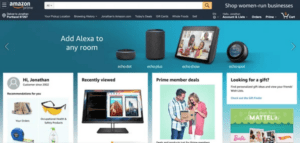
With the continuous advancement of artificial intelligence (AI) and machine learning, hyper-personalization is set to take center stage. Businesses will leverage real-time data analysis to gain an intricate understanding of individual customer preferences and needs.
This will allow them to deliver highly customized product recommendations, marketing messages, and interactions. For example, Amazon provides personalized product recommendations based on the customer’s shopping preferences and history.
2. Predictive Analytics
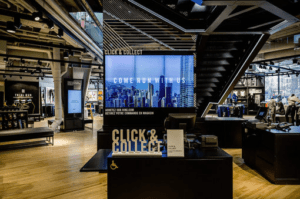
Along with hyper-personalization, predictive analytics will also play a pivotal role in the customer-centric landscape of the future. By leveraging historical data and trends, companies will be equipped to proactively address customer needs and behaviors, offering solutions and products before customers even realize they require them.
For example, Nike’s ‘Click & Collect’ initiative allows customers to shop and purchase the product online and pick it up from the store, seamlessly combining the convenience of online shopping with offline product testing.
Seamless omnichannel experiences will remain a driving force, as the boundary between physical and digital interactions continues to blur. Businesses must prioritize providing consistent and frictionless experiences across multiple touchpoints, allowing customers to seamlessly transition between online and offline realms.
3. Artificial Intelligence
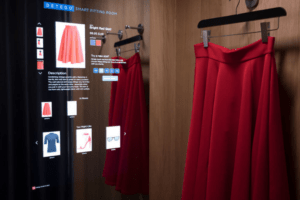
As AI interactions become more emotionally intelligent, brands will be better equipped to understand and respond to customer emotions. This evolution will contribute to more authentic and empathetic customer interactions. For example, smart-fitting trial rooms that provide customers with the right fit, product recommendations, etc.
Ultimately, the future of customer-centricity will demand agility and continuous learning. Businesses that remain flexible and open to evolving customer expectations, while embracing technological innovations, will be poised to thrive in a dynamic and customer-driven environment.
Bringing It All Together
In the days before the internet’s omnipresence, a dissatisfied customer might share their experience with a handful of friends – six to be exact.
Fast forward to today’s digital era, that same disappointed customer has the potential to reach a staggering 600, or even 6000 individuals. With the rise of platforms like social media, instant messaging, and online review sites, the ways to influence opinions are limitless.
That makes a customer-centric organizational culture a necessity for businesses. It can help a business reap several benefits – both monetary and non-monetary. Moreover, such a culture positions a business to beat competitors and secure its status as the preferred choice among customers.
Now, the path to a customer-centric business begins with listening and understanding. It’s crucial to grasp your customers’ needs, pain points, and expectations. This is where SurveySensum takes center stage. This tool helps you gather feedback from thousands of customers in real-time and helps you track and analyze them effectively and take action in time.







